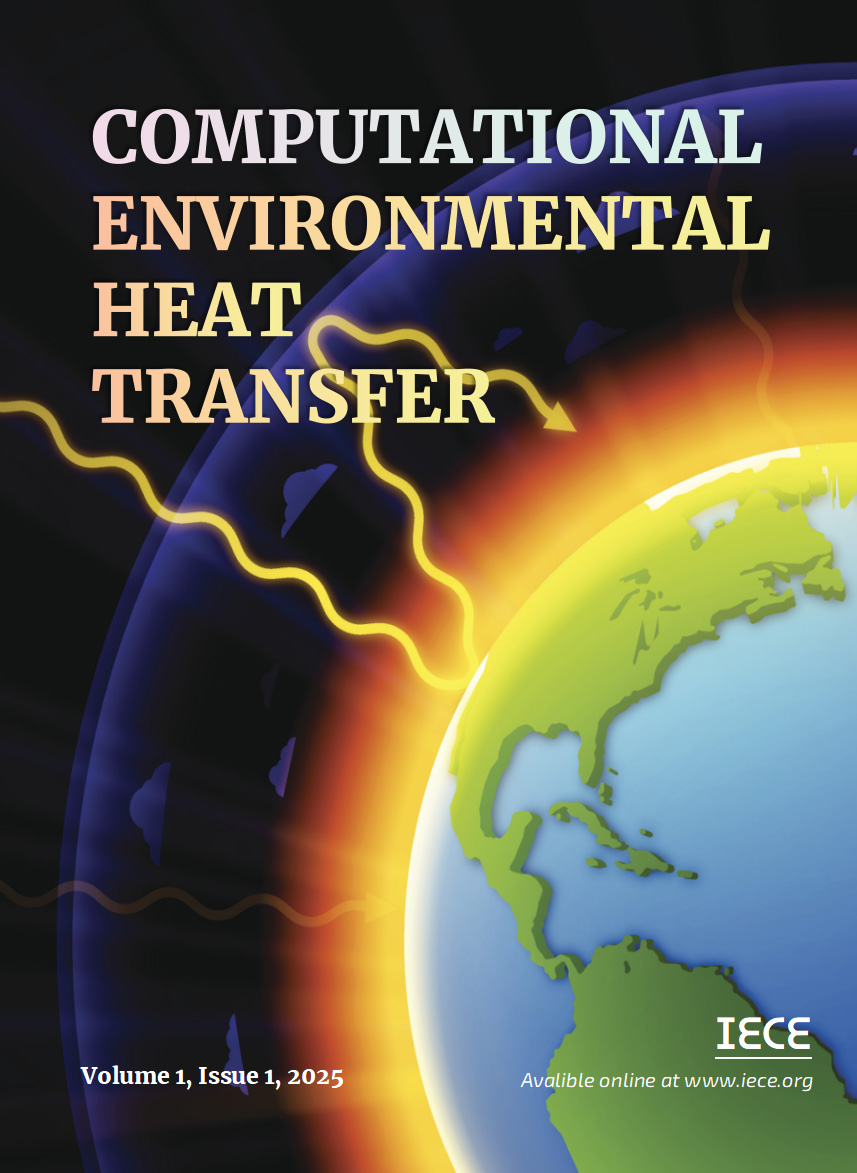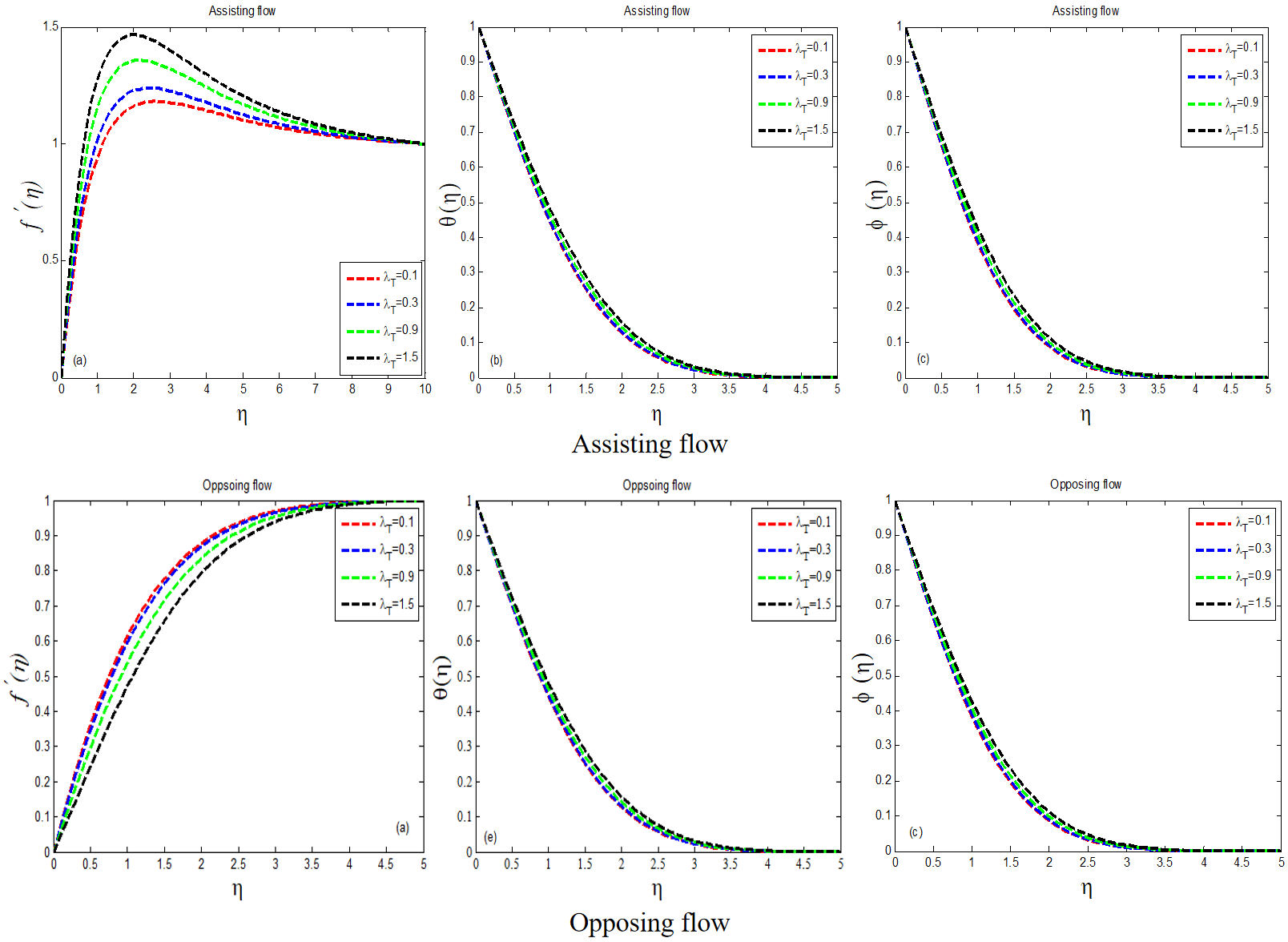Abstract
The investigation of stagnation point flow in viscoelastic fluid through a vertical sheet with Soret and Dufour effects is the focus of this study. Stream functions and similarity variables simplify the governing partial differential equations into ordinary differential equations. The model is then integrated using the MATLAB built-in solver bvp4c. In graphs and tables, the solutions for temperature profile, velocity distribution, and mass concentration, as well as their gradients at the surface, are depicted under the influence of emergent parameters that occurred in the flow equations. Physical reasoning is used to discuss the physical attitudes of physical unknown quantities of interest under the influence of various parameters. The results show that raising the viscoelastic parameter K leads to an increase in temperature and concentration profiles, but to a decrease in velocity for assisting flow. Opposing flow has a similar occurrence, with minor differences. The graphical results show that as the Dufour number Du is increased for assisting flow, fluid velocity and temperature increase with no discernible change in concentration profile. The temperature and concentration profiles intensify with increasing Du behavior in the situation of opposing flow velocity. It's worth noting that when the Soret number Sr is increased, the velocity curves increase, but the opposite is true for temperature and concentration profiles. Physical quantities' attitudes toward the above-mentioned parameters are in line with physical phenomena.
Data Availability Statement
Data will be made available on request.
Funding
This work was supported without any funding.
Conflicts of Interest
The authors declare no conflicts of interest.
Ethical Approval and Consent to Participate
Not applicable.
Cite This Article
APA Style
Abbas, A., Ain, Q. U., Ilyas, A., Kiran, L., & Jeelani, M. B. (2025). Soret and Dufour Effects in Computational Analysis of Assisting and Opposing Stagnation Point Flow of Viscoelastic Fluid. Computational Environmental Heat Transfer, 1(1), 27–38. https://doi.org/10.62762/CEHT.2025.786259
Publisher's Note
IECE stays neutral with regard to jurisdictional claims in published maps and institutional affiliations.
Rights and permissions

Copyright © 2025 by the Author(s). Published by Institute of Emerging and Computer Engineers. This article is an open access article distributed under the terms and conditions of the Creative Commons Attribution (CC BY) license (
https://creativecommons.org/licenses/by/4.0/), which permits use, sharing, adaptation, distribution and reproduction in any medium or format, as long as you give appropriate credit to the original author(s) and the source, provide a link to the Creative Commons licence, and indicate if changes were made.


 Submit Manuscript
Edit a Special Issue
Submit Manuscript
Edit a Special Issue

 Copyright © 2025 by the Author(s). Published by Institute of Emerging and Computer Engineers. This article is an open access article distributed under the terms and conditions of the Creative Commons Attribution (CC BY) license (https://creativecommons.org/licenses/by/4.0/), which permits use, sharing, adaptation, distribution and reproduction in any medium or format, as long as you give appropriate credit to the original author(s) and the source, provide a link to the Creative Commons licence, and indicate if changes were made.
Copyright © 2025 by the Author(s). Published by Institute of Emerging and Computer Engineers. This article is an open access article distributed under the terms and conditions of the Creative Commons Attribution (CC BY) license (https://creativecommons.org/licenses/by/4.0/), which permits use, sharing, adaptation, distribution and reproduction in any medium or format, as long as you give appropriate credit to the original author(s) and the source, provide a link to the Creative Commons licence, and indicate if changes were made. 